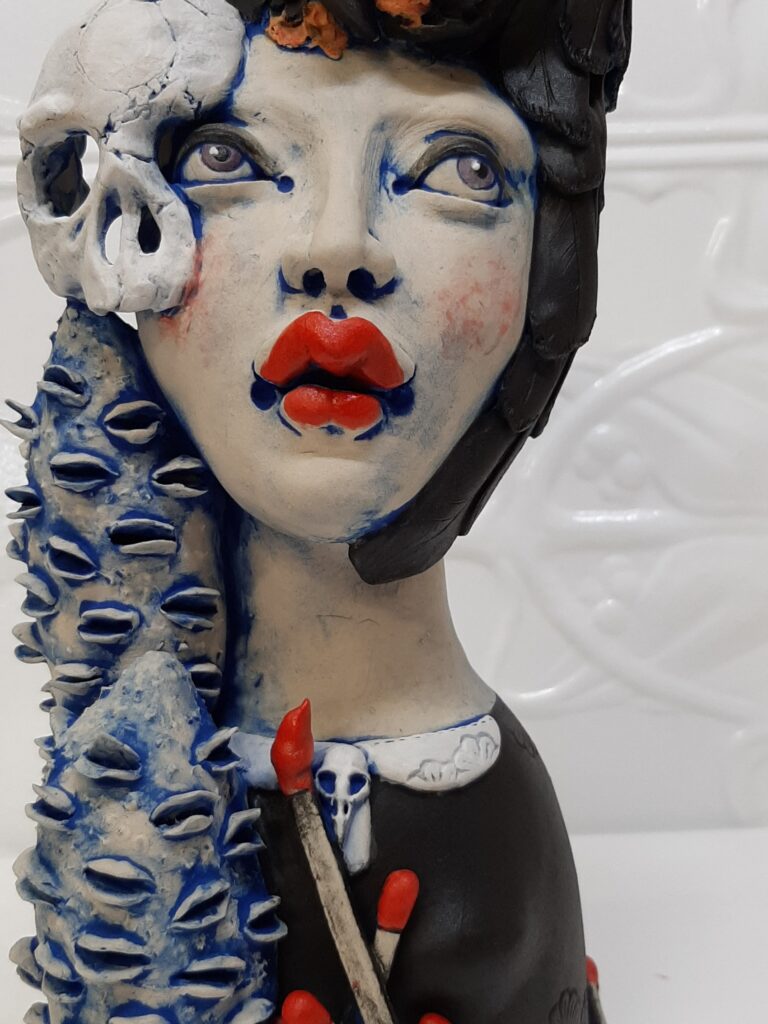
Crafting Tip: Using Glad Wrap with Cookie Cutters to Prevent Clay from Sticking
Are you tired of your pottery clay sticking to your cookie cutters, causing frustration and wasting precious crafting time? Fear not! There’s a simple solution

Coming to terms with the fact that someone may copy your work can be a challenging process, but it’s essential for your emotional well-being and continued creative growth.

Sure there are many things you can do like gathering evidence or looking for legal advice but I’m more interested in the emotional toll it can take. You have worked hard to develop your ideas and style and it’s hard to see that used by someone else. Sometimes it can be a person you thought was a friend, you share with them never thinking they would copy. All these things can be extremely upsetting. I love to share ideas with people and don’t like that after experiencing a betrayal of sorts that I felt less open and safe to share.
It can derail you from your creative path and that was the hardest thing for me , not letting it skew my focus and change what I was doing. I feel better having experienced it and learning to work through my insecurity and sadness that it brought up for me.
Here are some steps to help you accept that it may happen and develop a more balanced perspective:
1. Recognize That It’s Common
Understand that in the creative world, imitation is not uncommon. Many artists, both established and emerging, have experienced their work being copied or imitated in some form.
2. Acknowledge Your Feelings
It’s natural to feel a range of emotions when you discover your work has been copied, including frustration, anger, and disappointment. Acknowledge these feelings rather than suppressing them.
3. Focus on Your Unique Voice
Remind yourself that your creative work is an expression of your unique perspective, experiences, and style. No one can truly replicate your voice and your artistic journey.
4. Separate Imitation from Innovation
Recognize that while someone may copy your work on the surface, true innovation and creativity come from within. Your ability to continually evolve and explore new ideas sets you apart.
5. Surround Yourself with Supportive Peers
Connect with fellow artists who understand the challenges of the creative world. Sharing your experiences and seeking advice from those who’ve been through similar situations can be comforting and reassuring.
6. Use It as Motivation
Instead of dwelling on the negative aspects of copying, use it as motivation to continue evolving and pushing the boundaries of your creativity. Let it fuel your determination to stay ahead in your artistic journey.
7. Focus on Your Artistic Growth
Redirect your energy toward your artistic growth and exploration. Continue to develop your skills, experiment with new ideas, and challenge yourself creatively.
8. Practice Self-Care
Taking care of your mental and emotional well-being is crucial. Engage in self-care practices, such as mindfulness, meditation, or talking to a therapist, to manage stress and emotional challenges.
9. Remember Your Impact
Reflect on the impact your work has had on others and the joy it brings to those who appreciate it. Let this positive influence be a source of motivation and affirmation.
Ultimately, acceptance doesn’t mean you condone or endorse copying, but it does mean recognizing that it’s a part of the creative landscape. By focusing on your growth, unique voice, and the positive aspects of your creative journey, you can come to terms with the possibility of your work being copied and continue to thrive as an artist.
janelle

Are you tired of your pottery clay sticking to your cookie cutters, causing frustration and wasting precious crafting time? Fear not! There’s a simple solution

Josiah Mcmeekin Albany Advertiser Thursday 29 February 2024 9.00 am https://www.albanyadvertiser.com.au/news/regional/the-story-behind-albany-ceramicist-janelle-petersons-scuptures-c-13736436?utm_campaign=share-icons&utm_source=clipboard&utm_medium=clipboard&tid=1709177941197

A Guide to Using Silicon Molds with Clay Silicon molds provide a versatile tool for creating detailed designs and replicating intricate shapes with ease. In